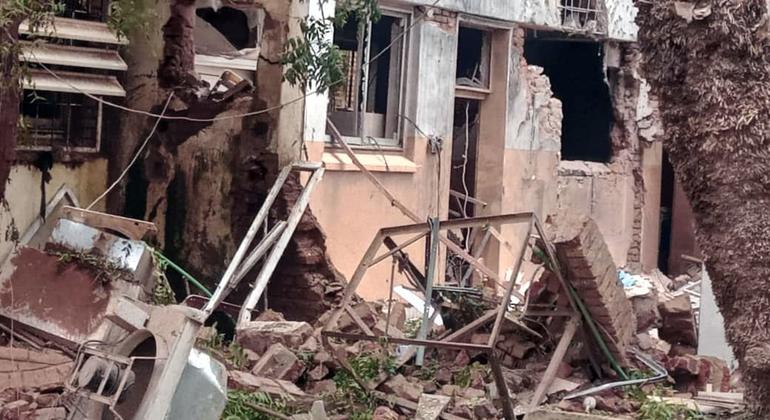First famine, now cholera and dengue fever hit war-torn Sudan


In a warning from the United Nations aid coordination office, OCHAit reports more than 28,000 cases of cholera and 836 deaths in 11 states from July 22 to October 28.
OCHA said the actual number of people infected may be higher due to underreporting; The United Nations agency also noted in its latest update on the emergency that The number of dengue fever cases continues to increasealso.
Rain compound disease
The current cholera outbreak increased sharply after an unusually heavy rainy season caused floods and polluted water sources. Kassala is the state most affected with 6,868 cases and 198 deaths, followed by Gedaref, Al Jazirah and the Northern state.
The dengue outbreak in Sudan is particularly severe in Kassala and Khartoum. As of October 28, there have been 4,544 cases and 12 dengue-related deaths reported, with Kassala alone accounting for more than half of these cases.
On August 12, the Ministry of Health declared a new cholera wave that began on July 22, prompting a new response from Sudan’s health authorities and humanitarian organizations. A vaccination campaign launched in October aims to vaccinate about 1.4 million people in the hardest hit states.
The developments come as UN aid groups and partners continue to warn of life-threatening famine in parts of Sudan, linked to the blockade and escalating fighting in El Fasher, state North Darfur. The only remaining Government-held city has seen some of the fiercest clashes since Start the war between rival armies Sudan Armed Forces (SAF) and Rapid Support Forces (RSF) in April last year.
The risk of famine increases
“This has delayed or prevented the delivery of commercial and humanitarian goods to areas of urgent need,” OCHA said. It cited NGO Médecins Sans Frontières (MSF) as confirming that acute malnutrition rates “remain above the Famine threshold (IPC Phase 5) in the Zamzam internally displaced persons camp”, refer to the United Nations-backed Integrated Food Security Phase Classification (IPC) initiative.
Famine conditions were confirmed at Zamzam camp in August. Although data remains limited for the Abu Shouk and Al Salam displacement camps near El Fasher, OCHA notes “significant civilian movements out from these camps and towards Zamzam”, due to heavy fighting, to ensure safety and access to services.
However, these vital services are under threat, including the approximately 5,000 children treated by MSF for acute malnutrition in the Zamzam camp which had to be suspended on 10 October “for allegedly months, parties to the conflict have blocked the supply of food, medicine, and other essential items.”
Humanitarians also “There is growing alarm about similarly severe food insecurity” is happening among internally displaced communities in the besieged areas of Dilling and possibly Kadugli in South Kordofan state.
8 out of 10 medical facilities closed
Sudan’s healthcare system remains overwhelmed, with many hospitals barely functioning or completely closed due to lack of supplies and fuel. According to the United Nations World Health Organization (WHO), up to 80% of health facilities in conflict areas – including Al Jazirah, Kordofan, Darfur and Khartoum – are almost non-functioning or closed.
“This collapse is hampering childhood vaccination programs and accelerating the spread of preventable diseases, raising concerns about the potential for large-scale outbreaks,” the WHO said.
Medical staff and centers were attacked
Violent attacks on healthcare facilities have increased, with 116 incidents reported since the outbreak of hostilities on April 15, 2023, leaving 188 dead and 140 injured. love. WHO platform that monitors attacks on healthcare recorded widespread incidents of violence, looting and intimidation affecting medical staff, facilities, ambulances and patients.
In the face of the enormous humanitarian crisis in Sudan, which has displaced more than 11 million people and pushed an estimated 3 million across borders, aid partners have continued to scale up their response across the country and reaching 12.6 million people.




